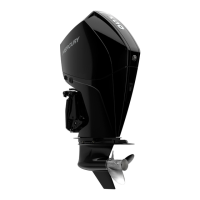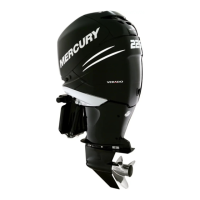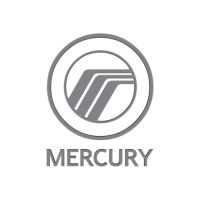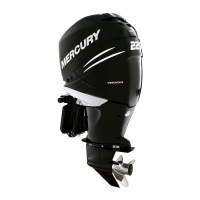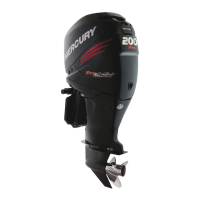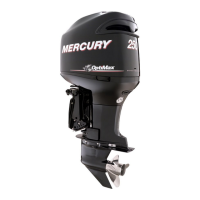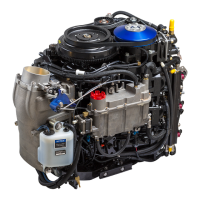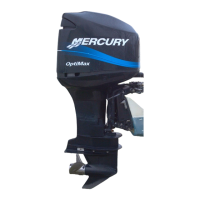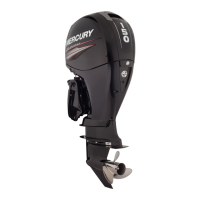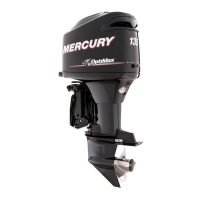Cooling
Page 4B-6 90-8M0050731 MAY 2011
Problem Diagnosis
Condition Recommended Range Possible Cause
Pressure below specification at idle 1.4–4 kPa (0.2–0.6 psi)
• Severe internal leak
• Inlet restriction
Pressure above 34 kPa (5 psi) at idle 1.4–4 kPa (0.2–0.6 psi)
• Plugged tell‑tale
Pressure is below minimum specification
at WOT, 5500 RPM with boat on plane
69 kPa (10 psi)
• Inlet restriction
• Severe internal leak
Pressure higher than normal at WOT, but
engine still indicates overheat condition,
5500 RPM with boat on plane
Maximum pressure ‑ 103 kPa (15 psi)
• Outlet water passages restricted
• Steam pocket has formed at top of
powerhead due to lack of cooling
water
• Kinked hose ‑ expansion chamber to
adapter plate
Pressure below specification at idle or
WOT
• Pinched/kinked/leaky hose from
exhaust cover to water pressure
sensor
• Plugged fitting on exhaust cover
• Wire harness connection at water
pressure sensor
• Weeds or debris on impeller shaft
Exhaust hose burned ‑ expansion
chamber to muffler
• Kinked hose ‑ strainer to starboard
fuel rail
• Plugged strainer ‑ adapter plate
• Kinked hose ‑ compressor to
expansion chamber
Model 200 Water Flow
Description
Water is pumped up through the adapter plate (9) and into the powerhead by the jet pump impeller which is constantly turning
whenever the engine is running. Water flows through the center of the block, around the cylinder sleeves and through the cylinder
heads (1).
Water exits from the bottom of the block and into the adapter plate (9) flowing past the exhaust runners and into the expansion
chamber. The water fills the expansion chamber and exits out the top of the chamber via a hose and back into the adapter plate
where it drains into the pump.
Water is also pumped from the starboard side of the adapter plate to the fuel cooler (13) and then to the air compressor (12). The
water exits the air compressor via a hose to a T‑fitting over the expansion chamber. The water is then sprayed into each exhaust
pipe for cooling purposes.
To allow complete passage filling and to prevent steam pockets, all cooling passages are interconnected. Small passages are
incorporated to allow the cooling system to drain.
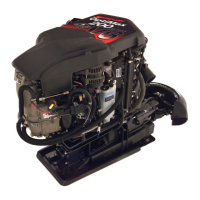
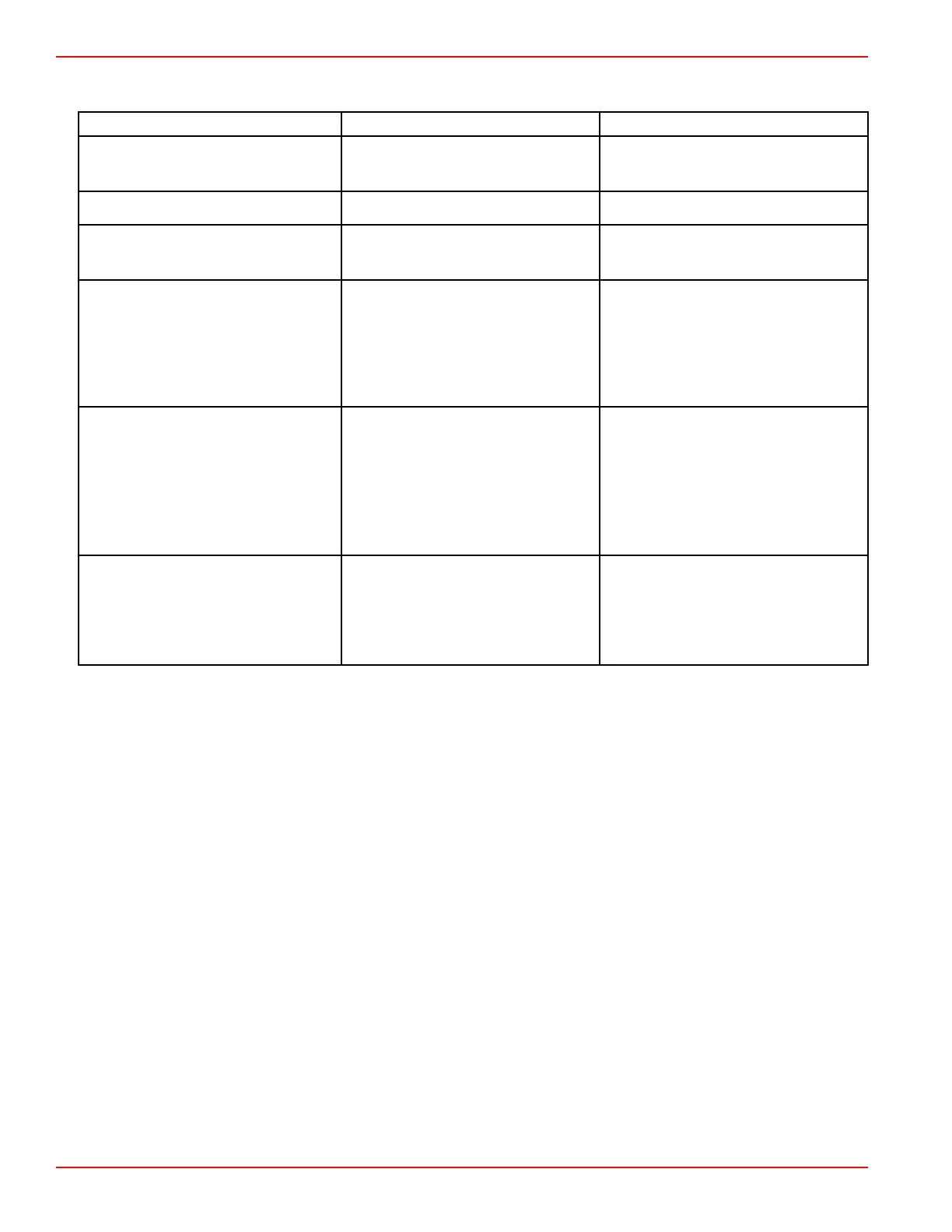